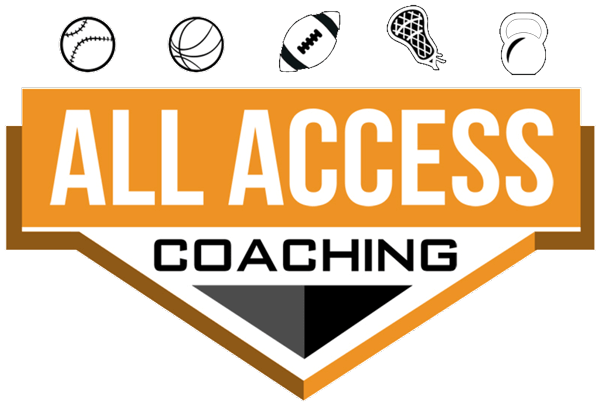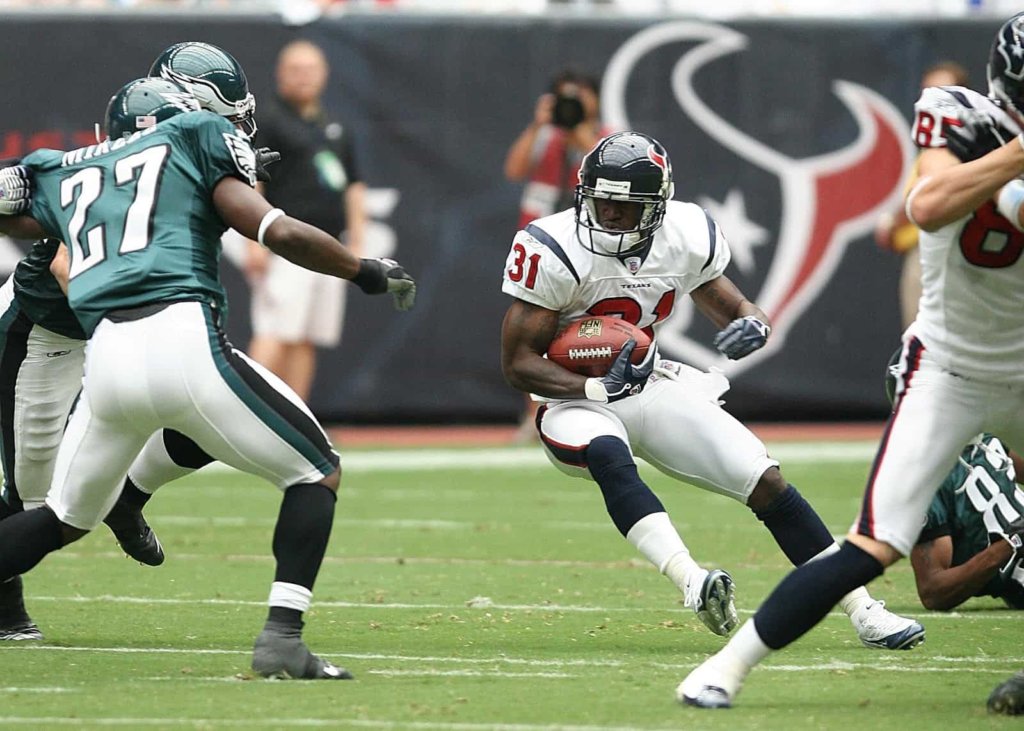Saturday to Friday: How to Scout an Opponent

The game of football is beautiful. 11 on 11 with a set of rules that makes sure the defense can never take away everything. Not without far superior talent.
Whatever the defense tries to take away opens something else up. It creates a weakness.
The challenge is to locate and attack what the defense gives up. To go into every Friday night with the tools to win.
Featured athletes. Special situations. Game film. Practice plans. Other coaches on staff. Each one is a tool you learn to use.
I would like to spend a couple of minutes and share with my process of finding these weaknesses and getting all my tools sharpened for Friday night.
ENTERING DATA
Step one is entering data. This is very time consuming and takes up several hours on Saturday.
Every coach on the staff is assigned certain columns to enter the 2 or 3 scout games that we exchanged. Our DB coach only enters the other teams pass routes, our O-Line coach only enters their defensive movements, our WR coach enters the opponents coverages…etc.
Self scouting is very important and on Sunday I go back and analyze how we called a game, looking for tendencies that we might be giving away. But again entering all that data is time consuming so we have our players do it.
That’s right. Our players. I make our QB, our Free Safety, and one other super dependable kid coaches on our HUDL account. The dependable kid ODK our film, including Gn/Loss, ball carrier, result. Then our QB enters all of our play calls on offense and our Safety enters our defensive calls.
They are expected to have this done by Saturday afternoon so our coaches can quickly grade players after they get home for our Saturday meeting (more on that later)
Changing your mindset about play calling is the critical piece. Realizing what you are already doing. Then improving it. Doing it better.
COACHES MEETINGS
I strongly believe that coaches should meet in person, even for a couple of hours, to discuss personnel changes, the next weeks schedules, etc. When we were still trading VHS tapes on Saturdays and internet was dial up AOL…this was a non-negotiable.
We try hard to keep our meetings focused and ending by 2pm on Saturday. No BS sessions. Show up and immediately start entering data on the opponent. A staff of 4-5 coaches can have all 3 games broken down in 2 hours.
Then the DB coach and DC get on the board in my living room…(we met at my house because my coaches liked to drink beer lol). The OL coach and myself would be on the board in the garage. SIDEBAR: Our “whiteboards” were cheap shower walls that we got at HomeDepot for $15-$20…
Around noon we would circle up as a staff, talk good & bad, possible personnel changes, and each coach would speak up as to what he needed covered in individual and group.
Notice: we never watched our film on Saturday. We can self-scout and grade players at home.
On Sunday afternoon I met with my OL coach and our DC. Sometimes this was via phone call. This was to iron out the weeks practice schedules and the blocking reports that the OL coach had prepared. Every coach had entire weeks practice schedules emailed on Sunday.
Every position coach was required to grade their players and post grades on Monday in the locker room.
Reply to this email and I will send you our Excel grading sheet.
Now I can understand the argument that you don’t have to meet because of HUDL and zoom….but I think at a minimum, every coach needs to talk sometime on Saturday whether it is a phone call or a zoom. NO TEXTING!!!
PRACTICE ADJUSTMENTS
Lots of coaches have heard of “If-Then” play calling. Not that many are using it. At least, not to the fullest potential.
For all the creativity coaches talk about, there’s a Paint-by-Numbers feel to the way we talk about play calling. If they do this, then you do this. It’s so simple.
Not really.
There are lots of If’s. More than a couple Then’s.
WHEN and HOW?
What and why are not the big questions, though. The big questions are WHEN to use these tools. And HOW to use them.
You learn HOW to identify defensive weaknesses so that you know WHEN to use your If-Then answers.
Elite play callers look at If-Then situations. Each call in the playbook is an answer to the defense. You can break the If’s into 3 larger categories based on when you use them.
- Predictive calling is the traditional idea of If-Then’s. “If this guy makes a tackle, then I call this play”
- Pre-snap calling has been made popular by the spread guys, but actually has been around in the form of audibles forever.
- Young coaches probably think Post-Snap Play Calling means RPO’s. It does. RPO’s are one style. But again, it has been around forever…Option QB making a read or the running back looking for cutback lane on inside zone.
In the PISTOL WING T offense we have a Post Snap read on every run play. Buck, Belly, Down, Counter, Jet….
You might do one more than another. Your pre-snap calls might be limited to a handful of automatic audibles. Or the only post-snap calling you do is a couple of simple pass concepts.
But good offensive coaches use them all.
They’re part of your play calling tool box.
And we practice these every day in practice. I have a call sheet. I have my scripts. Testing ideas. Looking at schemes. And I use my black sharpie in practice….ALOT. All I do on Mon, Tue, and Wed is delete, delete. And I delete anything on Thur run-thrus that is still causing confusion or generating questions.
CALL SHEETS & SCRIPTS
Top offensive coordinators use a call sheet as a guide. It keeps them on the If-Then path.
Then they use their play call script. The script is like a probe, finding the weaknesses in the defense. Once you find a weakness, it’s time to attack it.
I still script out my first 10 plays…and every play has a different motion or formation. And as soon as we go on defense, I am pulling up the ipad and writing down how they lined up to each formation. My scripts are all about formations, not plays.
It is important HOW to organize your call sheet so that you can quickly locate the next perfect call WHEN you need it.
Planning out your calls based on down & distance situations that do not change the defense does have some worth. Certain situations matter. But there is a better way.
But most of my play calls are about answering questions. My call sheet has the answers with the right play call to attack the weakness.
In a perfect world, you have as many answers as possible. In reality, you can’t carry more than you can manage. Or, more than your players can execute.
You figure out the answers before the game. Group them together to attack weaknesses.
Off-tackle run plays here. Cover 3 beaters there.
Have 9 plays that attack the same weakness? Time to trim the fat.
COUNTING
Counting is critical in football.
Counting wins football games.
Finding the numbers advantage is an easy way to find the right offensive play call. You look for the place you can outnumber them.
Don’t care who you are. Doesn’t matter what you run.
If you get 6 on 5, you have a better chance.
Most coaches know about counting the box. 5 man box, 6 man box, 7 man box. That’s what spread offenses look for.
You might be Double Wing, so you look for a 9 or 10 man box. The idea is the same.
Or you look for an advantage to one side. Can you get 6 on 5? Or go unbalanced and get 7 over 6?
In reality, you can count any area on the field. 2 over 3 in your Trips formation. 3 over 4 between the tackles.
1-high, 2-high or no high safety? Huge count for the passing game.
Just use your fingers. Football is so simple, we don’t even have to use the toes to count.
This is high level stuff. Most play callers are not doing it. They may think they’re using numbers. But they are not putting it all together.
Your play calling stops being about your best guess. It becomes a machine.
A System.
FRIDAY NIGHTS
I found the most challenging thing is to get our coaches to not watch the game the same way they watch it at home. All of our coaches need to train the eyes to watch for certain things:
- DL coach watches the opponents NG & DT
- OL coach watches our linemen
- RB coach watches their Inside Linebackers
- WR coach watches their secondary
- OC (me) watches the Ends and OLB
- Our LB and DB coach are on the ipad getting ready for the next defensive series
I memorize the jersey number of every starter and all I want to hear on the headset is the jersey number of who made the tackle. Discussions of WHAT the defense is doing happens while we are on defense.
Our freshman QB and freshman LB hold our iPads and follow the OL coach and DB coach so they can quickly see a play as soon as they need to see it. I am the OC and am in the pressbox with my own iPad and papers scattered everywhere, including taped to the walls.
Coaching is a process. It’s not about winning the chess match. High School and Youth Football is not about recruiting the best players.
You take who you’ve got. Then you coach them up. Get every last ounce of talent out of them. That is how your team becomes a fixture in the playoffs.
Every season.
Play calling using If-Then’s is not simple. It is also not a foreign concept. You are already using it. Make it part of an overall SYSTEM. Systems have answers.
Don’t go into Friday nights with a collection of plays….
Give your plays purpose. Recognize when to use each call. Know when you can throw a play out. Or when you need to add something new.
Successful coaches have a process. The process works.
They don’t rely on talent. They do not expect the scheme to do the work.
The kids they get are the kids they get. Then they get everything they can out of each athlete.





Responses